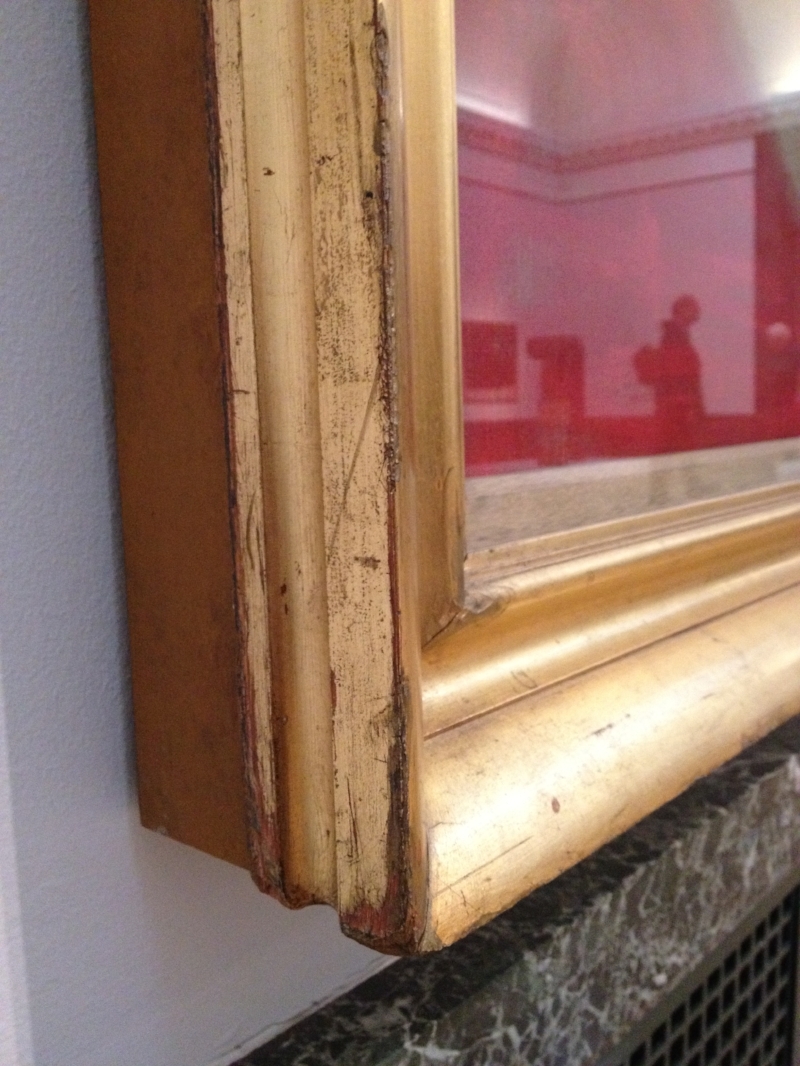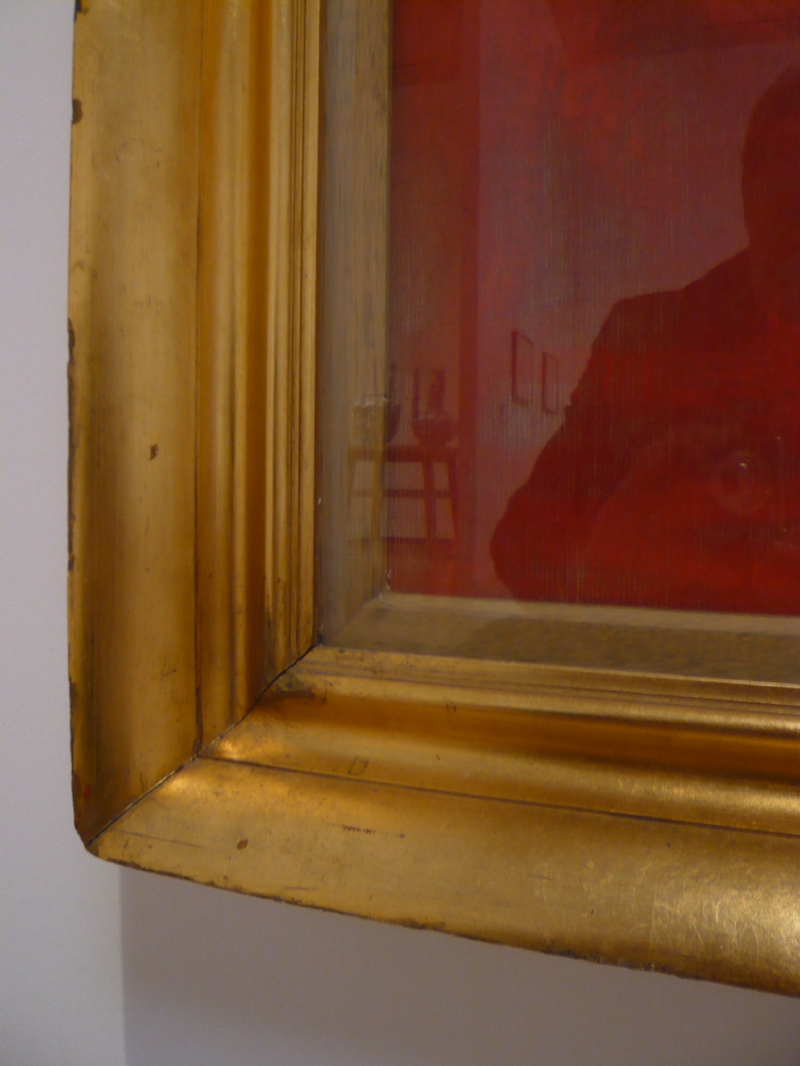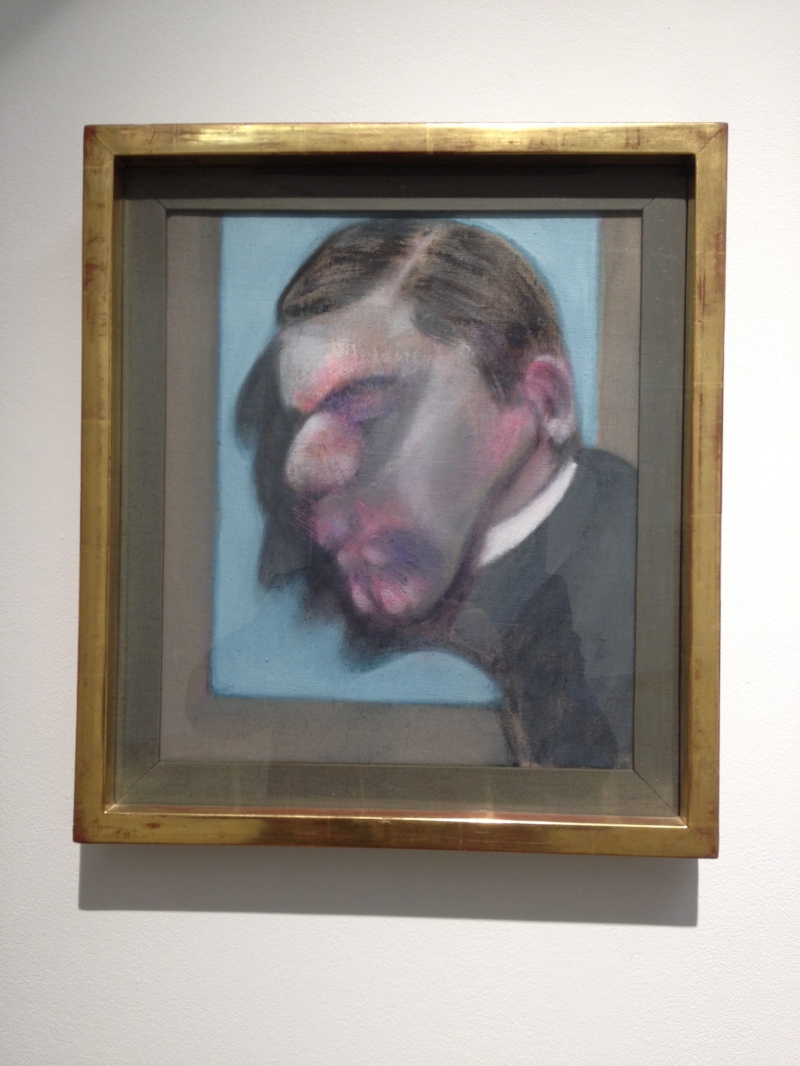A note on Francis Bacon’s frames
Francis Bacon chose plain gilded moulding frames for his paintings. These frames are distinctive for the brilliance, even garishness, of the untoned, burnished water gilding, which appears to heighten the acid oranges, yellows and purples of his modernist paintings.
Bacon used the picture framer Alfred Hecht during the 1950’s and 1960’s, who also framed for other contemporary artists such as Graham Sutherland and Ceri Richards, at his workshop in the King's Road, Chelsea.
Bacon typically used three identifiable frame patterns for his paintings: a wedge section; a cavetto; and a box frame with a coloured hessian or silk slip, chosen for smaller paintings.
The Wedge Section
Francis Bacon, Three studies for Figures at the Base of a Crucifixion, 1944
The Tate Gallery, London
Arnold Wiggins & Sons Picture Frame Archive ref: 3795
The Cavetto Section
Francis Bacon Study of a Dog, 1952
The Tate Gallery London
Arnold Wiggins & Sons Ltd Picture Frame Archive ref: 3683
The Shadow Box
Francis Bacon Study for a Portrait, 1978
Gilded shadow box with a painted grey slip
Christies, Post-War and Contemporary Art Evening Auction, February 2014
Wiggins Frame Archive 3744
The surfaces of Bacon’s paintings are fragile. Un-varnished and often painted on the non-primed side of the linen canvas, his gestural brushstrokes in oil paint contrast with the rich flat colour fields he created with washes of oil colour and crushed pastel or raw pigment. Glazing his paintings protects this vulnerable surface.
It has often been suggested that reflections caused by glazing are an effect desired by Bacon and that they add in some way to the scrambling of forms. However, interviewed by the art critic David Sylvester in the early 1970’s, regarding reflections, Bacon is emphatic, ‘I don’t want them to be there’. He expands on the subject of glazing, stating that because of ‘the very flat way I paint’ with ‘no varnishes’, the glass helps to ‘unify the picture’.
The paint surface is separated from the glass by a stained grey, quite thick, wooden slip with a bevelled inner edge. Bacon liked this effect of ‘the distance between what has been done and the onlooker that the glass creates’ and that this separation ‘enhanced the experience of looking at’ and ‘discovering the artwork’.
During Bacon’s lifetime there was not an alternative to ordinary glass with its inherent reflective qualities, as low reflective glass has only subsequently become available. Bacon stated that ‘to want the person reflected in the glass of a dark painting is illogical and has no meaning. I think it’s just one of those misfortunes. I hope they’ll make glass soon which doesn’t reflect’.
Michael Gregory
The excerpt quoted belongs to the Interview 3, which is based on three private recordings made in December 1971, July 1973 and October 1973 (Sylvester’s editorial note, 1993: 202). and published under the title The Brutality of Fact: Interviews with Francis Bacon.








